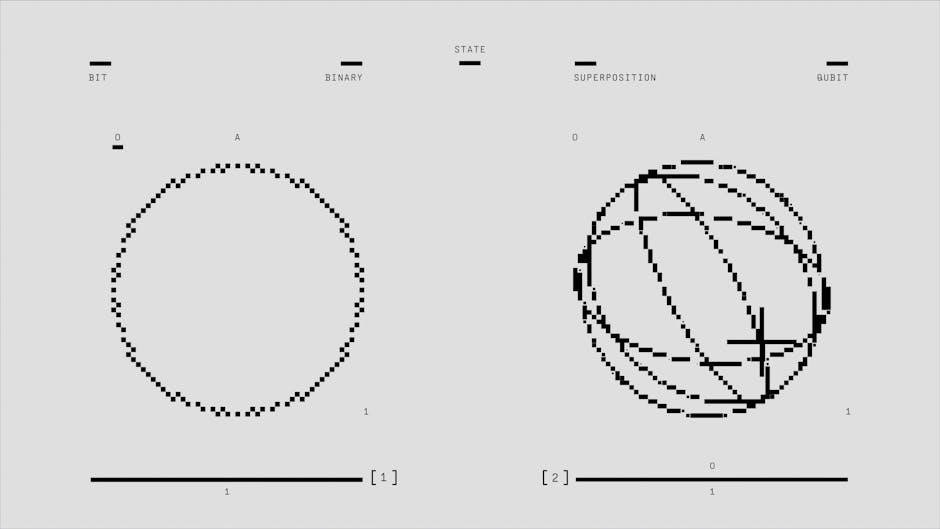The 2011 Ford F150 wiring diagram is a comprehensive guide essential for understanding and repairing the truck’s electrical systems. It provides detailed schematics for diagnosis, customization, and troubleshooting, ensuring accurate repairs and modifications. Available in PDF format, it covers engine, lighting, HVAC, and entertainment systems, making it indispensable for both mechanics and DIY enthusiasts.

1.1 Overview of the 2011 Ford F150
The 2011 Ford F150 is a versatile and powerful pickup truck known for its durability and advanced features. It was available in various engine options, including the 5.0L V8, 3.5L EcoBoost, and 6.2L V8, catering to different performance needs. The truck featured a robust electrical system, making the wiring diagram an essential tool for understanding its complex circuits. With its user-friendly design, the 2011 F150 appealed to both casual drivers and professionals, offering reliability for daily use and heavy-duty tasks. The truck’s electrical system supported modern amenities like the SYNC infotainment system, HVAC controls, and advanced safety features. For enthusiasts and mechanics, the wiring diagram provided a clear roadmap for troubleshooting, customizations, and repairs, ensuring optimal performance and longevity. Its popularity led to extensive online resources, including official Ford manuals and community forums, making it easier to maintain and upgrade the vehicle effectively.
1.2 Importance of Wiring Diagrams
Wiring diagrams are indispensable for understanding and working with the electrical systems of the 2011 Ford F150. They provide a visual representation of the vehicle’s wiring, making it easier to identify connections, trace circuits, and diagnose issues. Without a wiring diagram, even simple repairs or custom installations can become complex and time-consuming. These diagrams are particularly useful for troubleshooting electrical problems, such as faulty lights, non-functional accessories, or engine control system malfunctions. By following the wiring diagram, mechanics and DIY enthusiasts can pinpoint the root cause of issues, ensuring accurate and efficient repairs. Additionally, wiring diagrams are essential for installing aftermarket components, as they reveal the correct wiring paths and connections. They also help prevent costly mistakes by guiding users through safe and proper electrical modifications. Overall, the wiring diagram is a critical resource for maintaining, upgrading, and repairing the 2011 Ford F150 effectively.

Understanding Wiring Diagrams
Understanding wiring diagrams is crucial for diagnosing and repairing electrical issues. They provide a visual layout of the electrical system, including symbols, color codes, and abbreviations, offering a comprehensive guide for the 2011 Ford F150.

2.1 How to Read Wiring Diagrams
Reading wiring diagrams requires understanding the symbols, color codes, and layout. Start by identifying the legend, which explains the meaning of each symbol and line color. Trace circuits by following the flow of electricity from the power source, typically the battery, through fuses, relays, and switches to the final component. Use the color codes to identify wire purposes, such as power, ground, or signal lines. Pay attention to connector and splice locations, as these are critical for troubleshooting. Practice interpreting the diagrams by focusing on one system at a time, like the starting or lighting system. Use a multimeter to verify connections and ensure accuracy. Patience and practice are key to mastering this skill, as wiring diagrams can be complex but are essential for electrical system repairs.
2.2 Symbols and Color Codes
Understanding symbols and color codes is crucial for interpreting wiring diagrams. Symbols represent components like batteries, fuses, and relays, while color codes identify wire functions. For example, blue/white wires often indicate 12-volt constant power, while black wires typically signify ground connections. Red wires usually carry switched power, and yellow wires may represent signal or data lines. Green wires often denote starter or ignition-related circuits. These color codes help trace connections and diagnose issues efficiently. The diagrams also use abbreviations like “B” for battery and “G” for ground. Familiarizing yourself with these conventions ensures accurate repairs. Always cross-reference the legend provided in the diagram for specific meanings. Properly interpreting these symbols and codes is essential for safely and effectively working with electrical systems. This standardized approach simplifies complex circuits, making it easier to identify and resolve electrical issues in the 2011 Ford F150.
2.3 Common Abbreviations and Terminology
Understanding common abbreviations and terminology is essential for interpreting the 2011 Ford F150 wiring diagram. Abbreviations like “B” for battery and “G” for ground simplify the diagram. “CAN” stands for Controller Area Network, enabling vehicle communication, while “HS-CAN” denotes high-speed communication. “PWM” refers to Pulse Width Modulation, used for controlling components like motors. “VREF” stands for Voltage Reference, crucial for stable voltage. Terms like “ECM” (Engine Control Module) and “BCM” (Body Control Module) are vital for managing electrical systems. “DRL” (Daytime Running Lamp) and “Fog Lamp” indicate specific lighting functions. Familiarizing yourself with these abbreviations and terms ensures accurate repairs and modifications, making the wiring diagram a powerful tool for understanding and maintaining your vehicle’s electrical system.

Electrical System Components
The 2011 Ford F150 electrical system includes essential components like the battery, alternator, fuse boxes, and wiring harness. These elements work together to power and protect the truck’s electrical functions, ensuring reliable operation.
3.1 Battery and Alternator
The battery and alternator are crucial components of the 2011 Ford F150’s electrical system. The battery provides power when the engine is off, while the alternator charges it and powers the electrical systems when the engine runs. Proper wiring connections are essential for their operation, as outlined in the wiring diagram. The battery is typically located under the hood, and the alternator is belt-driven, ensuring consistent power supply. Overcharging or undercharging can lead to system failures, making it vital to monitor their condition. Regular maintenance, such as checking terminals and belts, helps prevent electrical issues. The wiring diagram provides detailed schematics for diagnosing and repairing these components, ensuring reliable performance and preventing electrical system breakdowns in the Ford F150.
3.2 Fuse Boxes and Relays
The 2011 Ford F150 features multiple fuse boxes to protect its electrical systems. The primary fuse box is located under the hood, while an additional one is found inside the truck, typically under the dashboard. These boxes house various fuses and relays that control essential systems. The wiring diagram provides a detailed layout of each fuse box, identifying fuses by number and their corresponding functions. For example, fuse 27 often relates to power distribution, while fuse 14 may control the radio system. Relays, such as those for the fuel pump or cooling fans, are also mapped in the diagram. Properly identifying and replacing blown fuses or faulty relays is critical to maintaining electrical system functionality. The diagram ensures accurate troubleshooting, helping users locate and resolve issues efficiently. Always refer to the wiring diagram to ensure correct fuse or relay replacement, as incorrect installations can lead to system damage or electrical failures.
3.3 Wiring Harness Overview
The wiring harness in the 2011 Ford F150 is a complex network of wires, connectors, and components that power and connect various electrical systems. It ensures reliable communication between the engine, transmission, and other critical systems. The wiring harness is divided into sections, including the engine compartment harness, door harness, and interior harness. Each section is designed to withstand the truck’s operating conditions, with materials resistant to heat, moisture, and vibration. The wiring diagram PDF provides detailed schematics of the harness, highlighting connections for systems like the HVAC, radio, and engine control modules. For example, the 3.5L Turbo engine’s wiring harness includes specific data lines for sensors and actuators. Properly understanding the wiring harness is essential for troubleshooting and custom installations, as incorrect modifications can lead to system malfunctions or electrical fires. Always consult the wiring diagram to identify the correct wires and connections for accurate repairs or upgrades.

Specific System Wiring Diagrams
The 2011 Ford F150 wiring diagrams provide detailed schematics for various systems, including the starting and charging, lighting, HVAC, radio, and engine control systems, aiding in precise repairs and customizations.
4.1 Starting and Charging System
The starting and charging system of the 2011 Ford F150 is thoroughly detailed in its wiring diagram. This section outlines the connections for the battery, alternator, and starter motor, ensuring proper electrical flow. It highlights the role of fuses and relays, such as the starter motor relay and alternator fuse, which protect the system from overcurrent. The diagram also illustrates the wiring paths for the ignition switch, enabling diagnosis of starting issues. Color-coded wires, such as the LT Green/Purple for the 12-volt constant power, simplify identification. Additionally, it covers the alternator’s charging circuit, including the voltage regulator and wiring to the battery. This comprehensive guide helps in troubleshooting common problems like dead batteries or faulty alternators, ensuring reliable starting and charging performance.
4.2 Lighting Systems
The 2011 Ford F150 wiring diagram provides detailed schematics for the lighting systems, covering headlights, taillights, fog lights, and interior lights. It outlines the wiring connections for each component, including fuses and relays. For instance, the backup lamp circuit is illustrated with specific wire colors like blue/white for the backup lamp power. The diagram also shows how the headlight switch and dimmer control interact with the wiring harness. Fuse box locations, such as the headlight fuse in the passenger compartment, are highlighted for easy access; Troubleshooting common issues, like dim or non-functional lights, is simplified by tracing wiring paths and identifying potential faults. This section is crucial for ensuring proper illumination and safety, making it a key reference for repairs and upgrades to the truck’s lighting systems.
4.3 HVAC System
The 2011 Ford F150 wiring diagram includes detailed schematics for the Heating, Ventilation, and Air Conditioning (HVAC) system, ensuring proper functionality and climate control. It outlines the wiring connections for components like the blower motor, temperature sensors, and actuators. The diagram highlights the integration of the climate control module with the truck’s electrical system, showing how signals are transmitted to adjust settings. Specific wiring paths, such as those for the rear auxiliary air conditioning, are clearly illustrated. Fuse and relay locations, like the blower motor relay in the passenger compartment fuse box, are also identified. This section is vital for diagnosing issues like inconsistent airflow or incorrect temperature settings, providing a clear guide for repairs and ensuring optimal comfort while driving.
4.4 Radio and Entertainment System
The 2011 Ford F150 wiring diagram includes detailed schematics for the radio and entertainment system, ensuring proper functionality and connectivity. It outlines the wiring connections for components like the radio unit, speakers, and amplifiers, providing a clear guide for diagnostics and repairs. The diagram highlights the integration of the entertainment system with the truck’s electrical network, showing how signals are transmitted for audio playback and control functions. Specific wiring paths, such as those for the rear speakers or subwoofer, are clearly illustrated. Fuse and relay locations, like the radio fuse in the passenger compartment fuse box, are also identified. This section is vital for troubleshooting issues like no sound, display problems, or connectivity errors with external devices, ensuring seamless entertainment and communication while driving. The detailed wiring information helps in maintaining or upgrading the system efficiently.
4.5 Engine Control System
The 2011 Ford F150 wiring diagram provides a detailed overview of the engine control system, essential for understanding and maintaining the truck’s powertrain. This section outlines the wiring connections for sensors, actuators, and control modules, such as the engine control module (ECM), throttle position sensor, and oxygen sensors. It also includes schematics for the wiring harness near the engine, highlighting components like the humidity sensor and air inlet temperature sensor. The diagram assists in diagnosing issues like rough idling, poor fuel efficiency, or error codes related to the engine. Specific wiring paths for systems like the blower motor and engine data lines are clearly illustrated. By following the diagram, mechanics can trace wiring faults, test circuits with a digital multimeter, and ensure proper communication between engine components. This section is crucial for maintaining optimal engine performance and addressing complex electrical issues effectively.

Troubleshooting with Wiring Diagrams
Wiring diagrams serve as a roadmap for diagnosing electrical issues in the 2011 Ford F150. They help pinpoint faults, trace wiring paths, and guide repairs, ensuring efficient problem-solving and accurate fixes.
5.1 Diagnostic Steps Using Diagrams
Using the 2011 Ford F150 wiring diagram PDF, diagnose electrical issues systematically. Start by identifying the problematic system, such as lighting or HVAC, and locate its circuit in the diagram. Trace wiring paths to pinpoint potential faults, such as faulty fuses, relays, or connectors. Use a multimeter to test voltage and continuity, referencing the diagram’s color codes and symbols for accuracy. Cross-check findings with the diagram to isolate components needing repair. This method ensures efficient troubleshooting, minimizing guesswork and reducing repair time. Always refer to the diagram for precise instructions, avoiding trial-and-error approaches that could damage the electrical system. By following these steps, users can resolve issues confidently, leveraging the diagram as a roadmap for electrical system maintenance and repair.
5.2 Common Electrical Issues
The 2011 Ford F150 often experiences electrical issues like blown fuses, faulty sensors, and wiring harness damage. Blown fuses are common due to overloaded circuits, while sensors may fail, causing incorrect readings. Wiring harness corrosion or damage can disrupt communication between systems. Dimming lights or dead batteries often indicate alternator or battery issues. Faulty relays may prevent systems like the HVAC or radio from functioning properly. Corrosion in connectors, especially in moisture-prone areas, can cause intermittent electrical failures. Power window and door lock malfunctions are also frequent, often linked to switch or module failures. These issues can be diagnosed using the wiring diagram PDF, which helps identify affected circuits and components. Addressing these problems promptly prevents further damage and ensures reliable operation of the truck’s electrical systems. Regular inspection of wiring and connections is recommended to avoid such issues.
5.3 Tools and Equipment Needed
Diagnosing and repairing electrical issues in the 2011 Ford F150 requires specific tools and equipment. A multimeter is essential for testing voltage, resistance, and continuity in circuits. Wiring testers and circuit analyzers help identify faults in the harness. Pliers, screwdrivers, and wrenches are necessary for accessing and repairing connectors. A fuse puller is handy for safely removing and replacing fuses. A digital multimeter (DMM) is crucial for pinpointing electrical malfunctions. Additionally, a wiring diagram PDF provides a visual guide for tracing circuits. Safety gear, such as insulated gloves and goggles, protects against electrical shocks and debris. A CAN bus scanner may be needed for advanced diagnostics in modern systems. Proper tools ensure accurate repairs and prevent further damage. Always refer to the wiring diagram for specific procedures and connections to avoid mistakes during troubleshooting or modifications.

Safety Precautions
Always wear insulated gloves and goggles when working with electrical systems to prevent shocks and debris exposure. Disconnect the battery before starting repairs to avoid live circuits. Use proper tools and follow the wiring diagram to ensure safe and accurate modifications. Adhere to best practices to prevent electrical fires or system damage.
6.1 Best Practices for Electrical Work
When working on the electrical system of your 2011 Ford F150, always start by disconnecting the negative battery terminal to prevent accidental short circuits. Use a multimeter to test wires before handling them, ensuring they are de-energized. Refer to the wiring diagram to identify circuits accurately. Avoid cutting or splicing wires without proper tools, as this can lead to system malfunctions. Grounding is crucial; ensure all components are correctly grounded to prevent electrical noise or fire hazards. Keep the work area clean and well-lit to minimize errors. Follow the manufacturer’s guidelines and use insulated tools to protect yourself from electrical shocks. Regularly inspect wiring harnesses for signs of wear or damage, addressing issues promptly to maintain reliability and safety. By adhering to these practices, you can ensure safe and effective electrical repairs or modifications on your vehicle.
6.2 Safety Equipment and Gear

When working with the electrical system of your 2011 Ford F150, it is essential to use proper safety equipment to prevent injuries and ensure safe repairs. Always wear insulated gloves and safety glasses to protect yourself from electrical shocks and flying debris. A multimeter is a critical tool for testing voltage and current, helping you identify live wires and avoid dangerous situations. Keep a fire extinguisher nearby, as electrical malfunctions can sometimes spark fires. Ensure your work area is well-ventilated and free from flammable materials. Use a wiring diagram to guide your work, as it provides a clear understanding of the electrical layout. Never bypass safety mechanisms or disable airbags when working near sensitive systems. Proper grounding tools and a non-contact voltage tester are also recommended to ensure your safety while diagnosing or repairing electrical issues. Prioritizing safety ensures a smooth and hazard-free experience when working on your vehicle’s electrical system.

Resources and References
Official Ford manuals, online forums like F150Ecoboost.net, and repair guides provide comprehensive wiring diagrams and troubleshooting tips for the 2011 Ford F150. These resources are available in PDF format for easy access.
7.1 Official Ford Manuals and Guides
Official Ford manuals and guides are the most reliable sources for obtaining accurate wiring diagrams and electrical system information for the 2011 Ford F150. These manuals are specifically designed by Ford to provide detailed schematics, diagrams, and explanations for every electrical component in the vehicle. They are available in PDF format, making them easily accessible for viewing on computers or mobile devices. The official Ford manuals cover a wide range of topics, including wiring diagrams for the engine, lighting, HVAC, and entertainment systems. They also include troubleshooting guides and step-by-step instructions for repairs and modifications. For the 2011 Ford F150, these manuals are tailored to specific engine types, such as the 5.0L V8 and 3.5L EcoBoost engines, ensuring precise information. Page 72 of the 2013 wiring diagram PDF is particularly useful for understanding power distribution and wire colors. These resources are indispensable for mechanics and DIY enthusiasts alike, offering comprehensive coverage of the truck’s electrical systems. By following these official guides, users can ensure accurate and efficient repairs or customizations. They are widely available on Ford’s official website and trusted automotive repair platforms.
7.2 Online Forums and Communities
Online forums and communities are invaluable resources for sourcing and discussing the 2011 Ford F150 wiring diagram. Websites like F150Ecoboost.net and other truck enthusiast forums offer a wealth of information, including shared wiring diagrams and personal experiences. Members often post detailed PDF files, such as the 2011 Ford F-150 3.5L Turbo wiring diagram, and provide insights into troubleshooting and customization. These platforms allow users to ask questions, share knowledge, and learn from others who have worked on similar projects. Additionally, forums like Ford F150 communities on social media and specialized automotive websites host discussions on electrical systems, including tips on interpreting wiring diagrams and resolving common issues. These online spaces foster collaboration and provide a supportive environment for both novice and experienced mechanics. They are particularly useful for accessing rare or specific wiring diagrams not easily found elsewhere. Engaging with these communities can significantly enhance one’s understanding and effectiveness in working with the 2011 Ford F150 electrical system. They serve as a complementary resource to official manuals, offering real-world applications and advice. By leveraging these forums, users can gain practical insights and solutions tailored to their needs. The collective expertise within these communities makes them an essential tool for anyone working on their Ford F150.
7.3 Repair Manuals and Additional Resources
Repair manuals and additional resources are crucial for effectively using the 2011 Ford F150 wiring diagram. Official Ford manuals provide detailed instructions, while third-party repair guides offer supplementary insights. Websites like Manualslib and Fordification Net host wiring diagrams and schematics for various systems, including the 2011 Ford F-150. These resources often include PDF downloads, such as the 99-page manual for the 5.0L V8 and 3.5L Turbo engines, covering wiring harnesses, fuse boxes, and component locations. Additionally, forums like F150Ecoboost.net offer user-shared diagrams, such as the 2011 Ford F-150 3.5L Turbo wiring diagram. These materials are essential for DIY enthusiasts and professionals alike, ensuring accurate repairs and customizations. They complement the wiring diagram by providing step-by-step guidance and system overviews, making them indispensable for understanding and working on the truck’s electrical systems. These resources are often updated and expanded by the community, offering a comprehensive support network for Ford F150 owners.
The 2011 Ford F150 wiring diagram serves as an essential roadmap for understanding and maintaining the truck’s electrical systems. It simplifies troubleshooting, repairs, and customizations, ensuring optimal performance and reliability. By providing detailed schematics and guidance, it remains an indispensable resource for both professionals and enthusiasts, fostering confidence in every electrical task.
8.1 Summary of Key Points
The 2011 Ford F150 wiring diagram is a vital resource for understanding and maintaining the truck’s electrical systems. It provides detailed schematics for troubleshooting, repairs, and customizations, ensuring accurate diagnoses and efficient fixes. Available in PDF format, it covers essential systems like the electrical components, engine control, and entertainment systems. This guide is indispensable for both professional mechanics and DIY enthusiasts, offering clear instructions and comprehensive diagrams. By following the wiring diagram, users can confidently navigate complex electrical tasks, ensuring the truck’s optimal performance and reliability. The 2011 Ford F150 wiring diagram remains a cornerstone for anyone working on this vehicle, simplifying even the most challenging electrical projects.

